[Review] Timespinner – Nintendo Switch
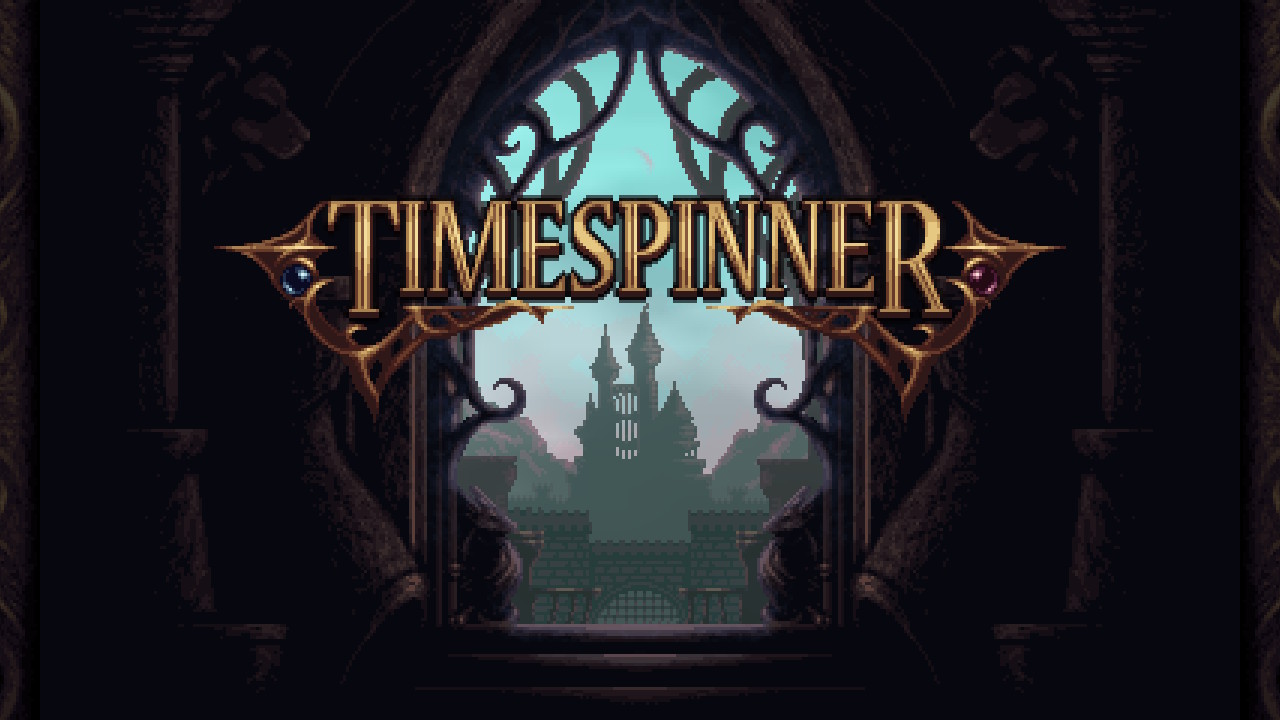
Timespinner
Nintendo Switch
Developed By: Lunar
Ray Games
Published By: Chucklefish
Category: Action, Adventure,
Role-Playing
Release Date: 06.04.19
Writing intros for reviews can be kind of hard. I always want to come up with an original concept to introduce the game and its background that I haven’t used a dozen times before, and sometimes – a lot of times – OK, most times – I just end up talking about what I know about a game’s development or apparent influences. And that’s what I’m doing for today’s game, Timespinner for the Nintendo Switch, because, dangit, it works. I could tell you about its successful Kickstarter campaign where it raised over $175,000, or that it’s been ported from PC to every modern console, and that would all be cool information to have. But the only thing you really need to know here is that it’s Chrono Trigger, but it’s also Castlevania, and it more than lives up to the legacy of those legendary games. Exactly what else do you need to know?
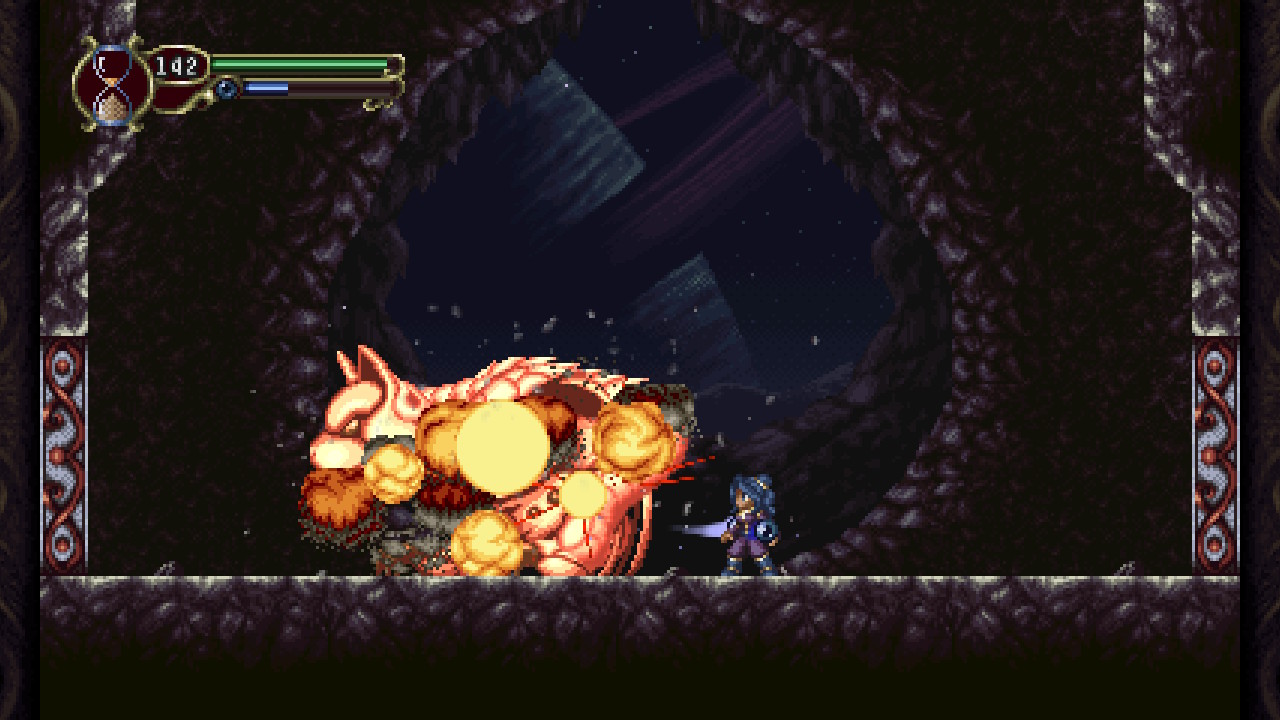
Timespinning a Yarn
The Lachiem Empire has expanded across the stars, conquering unsuspecting planets far and wide in its quest for universal dominance. On the frontier planet of Winderia, Emperor Nuvius is targeting the insular Qaelan clan and their mysterious artifact known as the Timespinner. For generations, the Qaelan have trained members of their tribe as Time Messengers, who, in times of great danger, will use the Timespinner to go back in time and warn the clan of its impending peril. In doing so, however, the Time Messengers erase themselves from the timeline, thereby sacrificing whatever family and relationships they had built.
Selen, a member of the Qaelan council of elders, and her daughter Lunais have both been trained as Time Messengers. The game opens as Lunais is celebrating the completion of her training when, suddenly, Nuvius’ forces attack. Lunais and Selen run to use the Timespinner, but with a twist; instead of merely sending themselves back in time to warn of Lachiem’s attack, they will go farther back and stop the Lachiem from ever making contact with Winderia. Nuvius destroys the Timespinner and kills Selen as she is spinning the machine up, which leaves Lunais stranded on a strange planet with no way to get home.
Lunais is in fact stranded on Lachiem, but in its present rather than its past. Upon finding pieces of the Timespinner, Lunais gains the ability to travel one thousand years in the past at certain magical portals, and she has to make a decision; does she complete her mission and keep Lachiem from ever coming into contact with Winderia, or does she pursue revenge against the emperor who has destroyed her clan and murdered her mother?
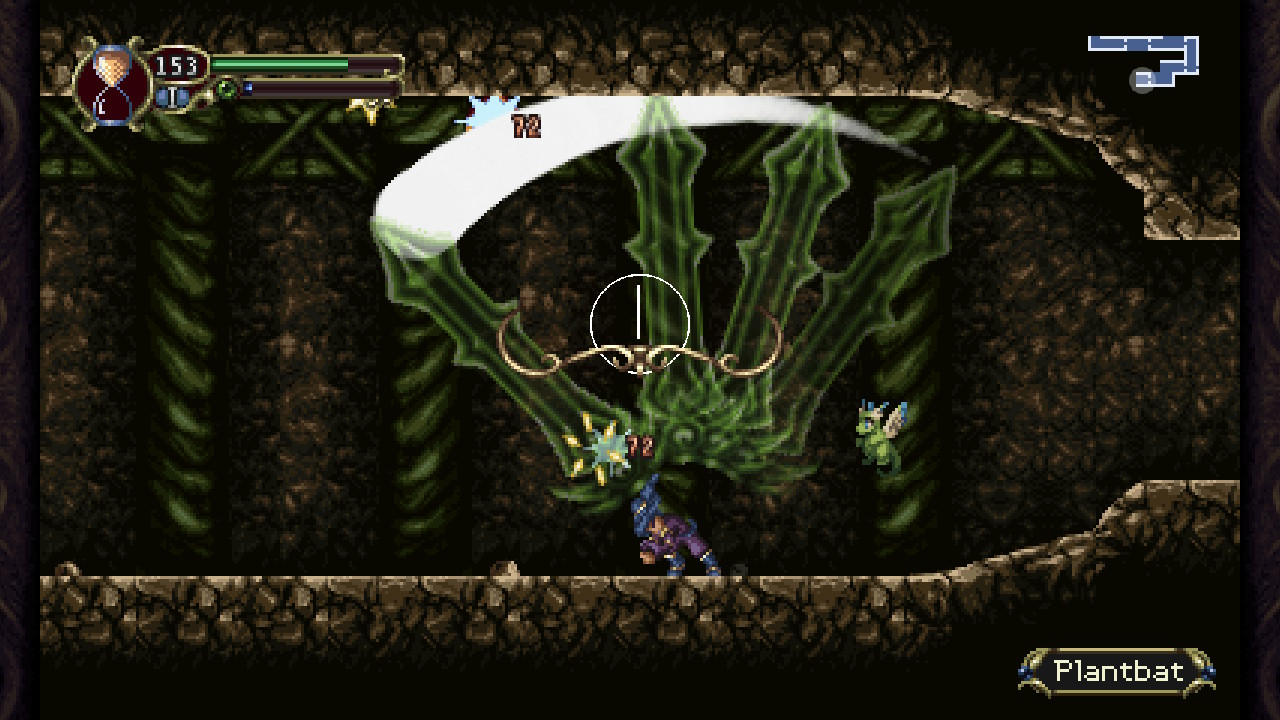
The Path Not Taken
Timespinner could have been a pretty straightforward revenge story and it would have been perfectly acceptable. Instead, the game has Lunais exploring the past events that shaped Lachiem into the unforgiving juggernaut it is in her original timeline. The more she discovers about the path Lachiem was forced to take to become what it is, the more she questions her own purpose and resolve. Timespinner operates in a nuanced and complicated world, where the long-term consequences of every action have unforeseen repercussions for which Lunais must be willing to take responsibility. The game features multiple endings which succinctly explore Lunais’s final decisions, making for a satisfying resolution to whichever choice you end up making.
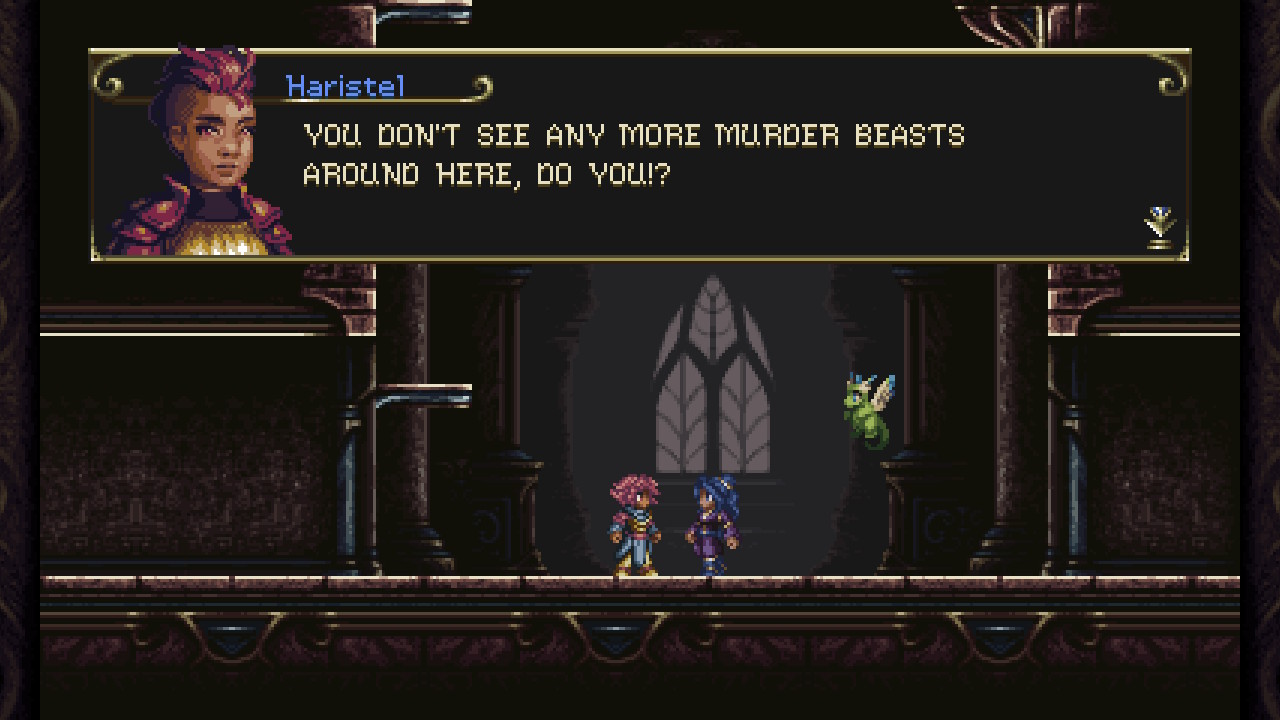
Metroid in the Present, Vania in the Past
Timespinner is a metroidvania-style action platformer, which for the uninitiated means there aren’t levels like there are in, say, a Mario or Mega Man game. Instead, there’s one map with areas that are inaccessible at first, but become accessible after you find certain item or gain the right new abilities. Well, OK, actually there are two maps, one in the past and one in the present, but they line up pretty well. It’s pretty fun to see how things change between the two; a deep cave in the present was a lake in the past, or something similar. The platforming itself is not overly challenging, except for maybe one tower near the very end of the game. Even then, you eventually get a ring that lets you blast straight up as long as you want which makes the platforming elements all but obsolete. Of course, that’s right at the end of the game, so whatever challenge there is lasts for almost the whole experience.
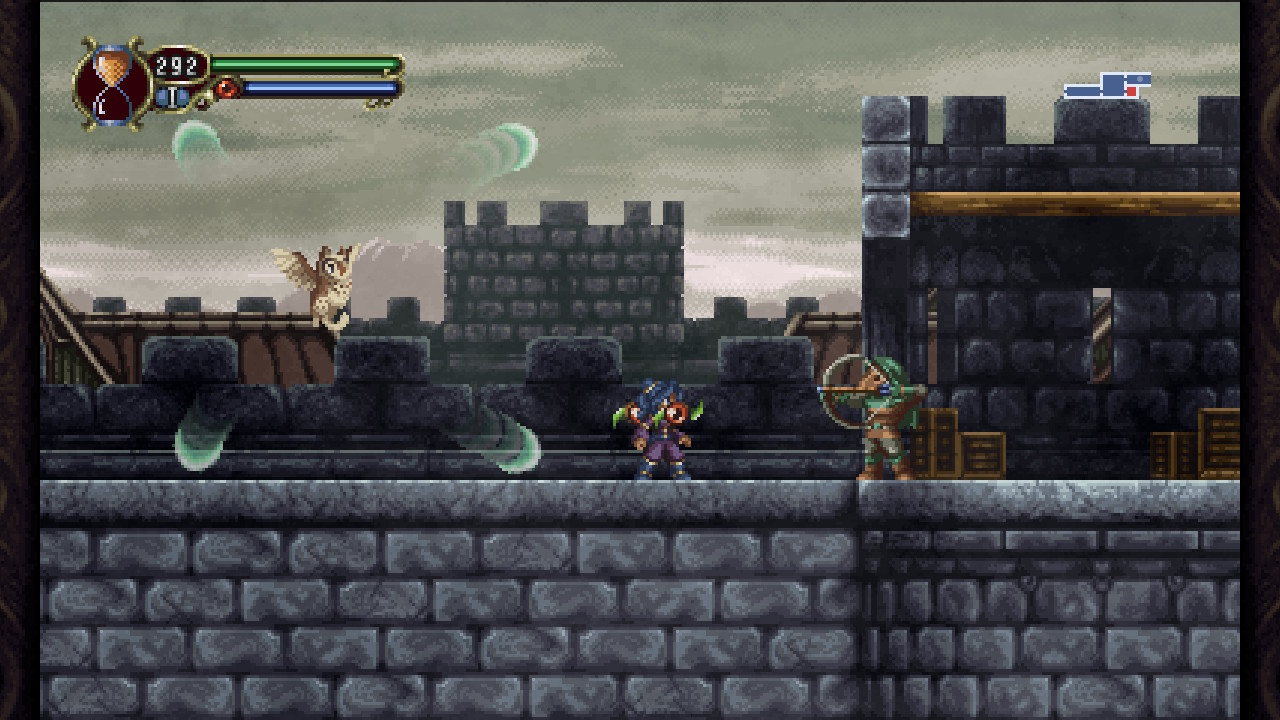
Power of the Spheres
The action element of Timespinners is quite a lot of fun. In addition to regular action-platformer moves like running, jumping, and dashing, you have a variety of attacks at your disposal. Over the course of your adventure, you’ll come across lots of different orbs which Lunais can equip as weapons. They’ll all have different elements and attack concepts; from the basic blue orb which attacks with a basic melee attack, to the plasma orb which shoots bolts of lightning at your foes, each orb has a unique playstyle. Unfortunately, this means that some orbs are incredibly useful while some are just kind of there to be collected. After I got the plasma orb and I could just clear an enemy from the room without ever getting close enough for it to attack; it just seemed pointless to use anything else.
In addition to the orbs, you can find pendants which allow you to cast different spells and rings which endow passive abilities. The spells take aura points to use and range from energy blasts to summoning giant swords to creating blocks you can use to extend your jump range. Passive abilities include the ability to see hidden passages, regenerate health or aura points faster, or drain health from your enemies whenever you land an attack. You can also equip a familiar, which is a fun little pet that flies around Lunais and occasionally attacks her enemies. Different familiars have different types of attacks, ranging from a regular melee attack to something like fire breath from your dragon, or a laser blast from the tiny robot.
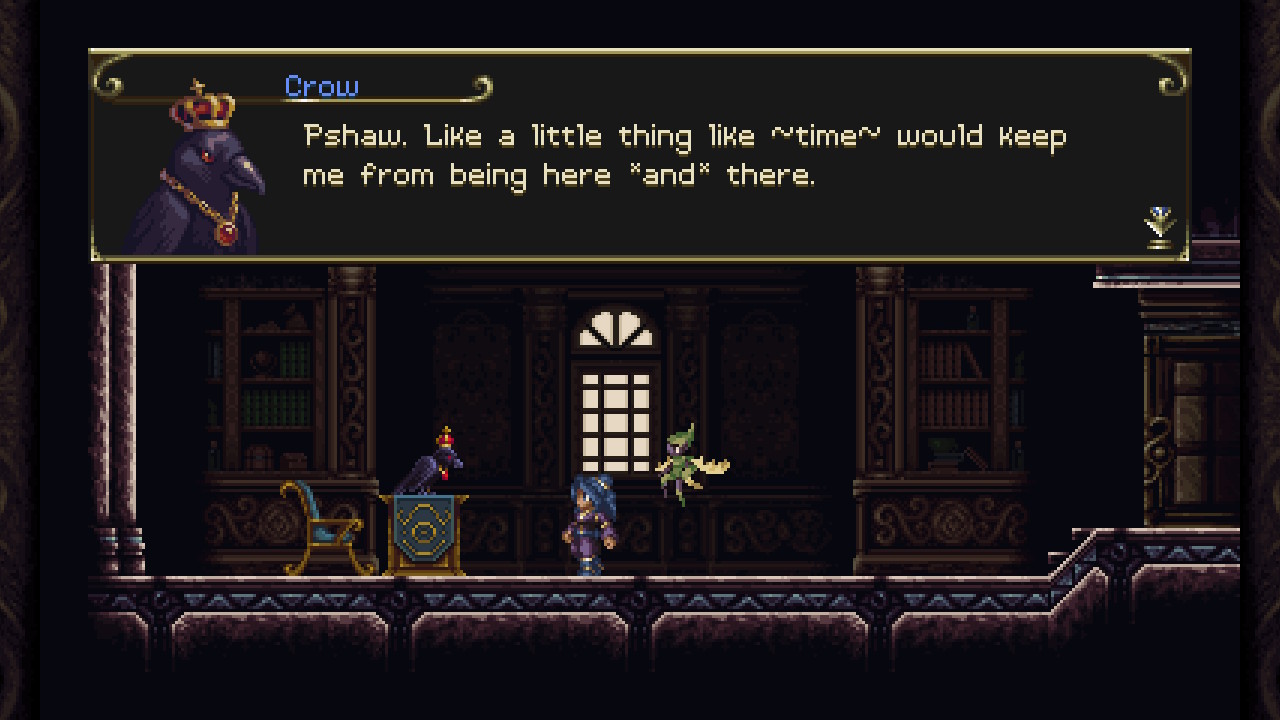
If I Could Turn Back Time… But I Can Only Freeze It
The most fun mechanic in the game is, by far, the ability to stop time. Once you get your first piece of the Timespinner, you can freeze time as long as there is sand in the hourglass displayed near your health bar. This has a number of uses in battle; well, OK, they all really boil down to the ability to get out of the way of an attack, but it’s a useful thing to have in your arsenal. The hourglass refills as you attack enemies or certain destroyable objects throughout the map. When time is stopped, your enemies actually turn into platforms you can jump on without causing damage to yourself, so the time stop ability is actually useful – and in many cases, necessary – for the game’s platforming elements as well. The idea of the ability is a lot of fun and it is seamlessly and intuitively integrated into the gameplay, and, taken together with the smooth platforming and combat, Timespinner’s gameplay is simply awesome to experience.
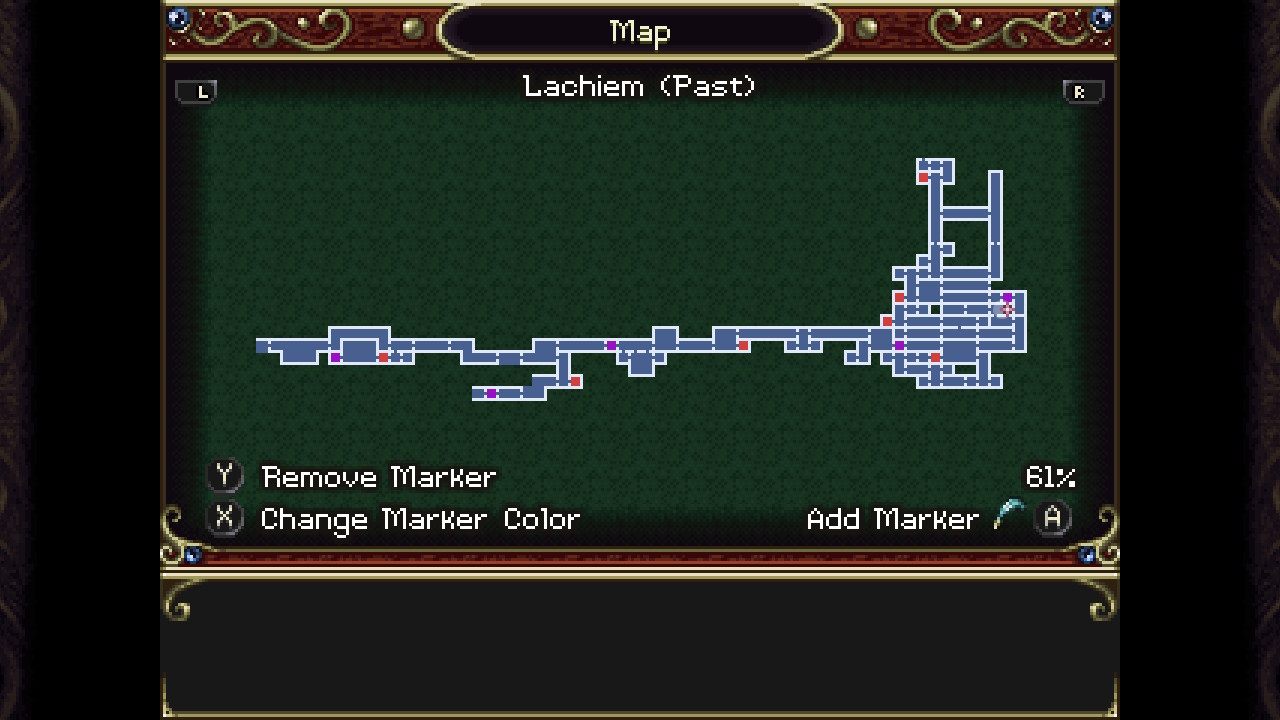
And the Rest is Role-Playing
While the real meat of the gameplay is the action platforming, Timespinner also heavily features RPG elements. In addition to the equipment system, you also gain levels as you defeat enemies, resulting in more health and aura points. You gather currency in the form of small crystals that drop which can be spent at shops for healing items and equipment. There are even NPCs that send you on side quests. Even though they’re fairly generic fetch or kill quests, they still add a little variety to the game and add some depth to the game’s narrative, which is something of which I am always in favor. Exploring the backstories of quest-giving NPCs builds a richer world, and offers Lunais greater insight into the human cost of the events which shaped her world.
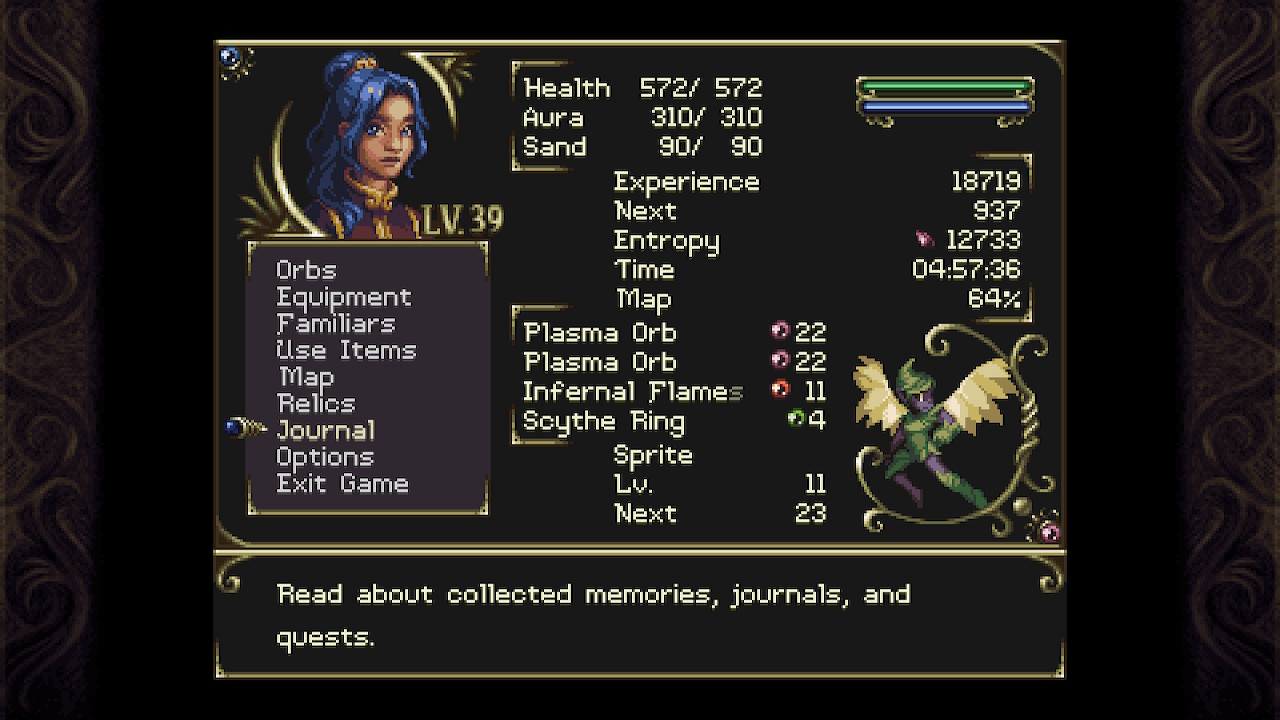
What’s Old Is New Again
Fittingly enough for Timespinner’s themes, its sense of aesthetics has travelled from the past to grace today’s most popular console. The graphics are very obviously inspired by Chrono Trigger – and I can’t think of a scenario where I would ever consider that a negative. From the character sprites to the background designs, every inch of the game screen holds up to the standard set by Squaresoft’s classic time-travel caper – and the story comes really, really close, too. I had to deduct points because I couldn’t recruit Frog. Frog is awesome. Musically, the two games are dead even in terms of quality. Timespinner’s soundtrack isn’t 16-bit like the graphics, so it cheats a little, but that’s fine. Every song is instantly memorable, vibrant, and appropriately atmospheric. It’s a short game, taking me only about ten hours to finish one playthrough, and consequently the soundtrack isn’t exactly expansive, but that’s a small price to pay when the songs are this good.
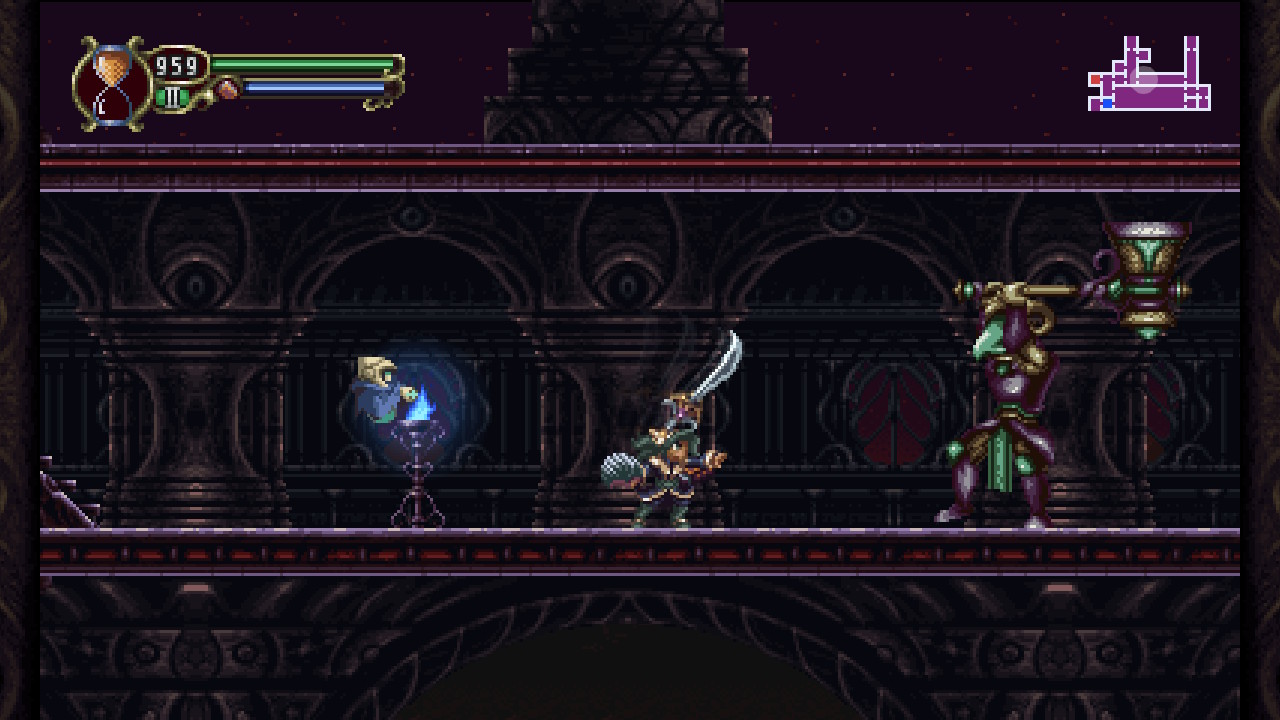
Playability
Timespinner doesn’t feature any touch or motion controls, so you can play it docked or undocked as you prefer. It definitely played smoother on a Pro controller over the Joycons, but that’s pretty much always true. Personally, I liked seeing the graphics on a big screen and listening to the awesome soundtrack on my 5.1 speaker system, but it looked just as good on the handheld screen and the Switch’s speakers were good enough for the audio. But some games deserve better than “good enough,” and Timespinner is one of them. Play this one on a TV.
TL;DR: Fantastically designed and executed metroidvania RPG.





Buy Timespinner
$19.99
Follow Lunar Ray Games
Follow Chucklefish







![[Review] The Escapists 2 – Nintendo Switch The Escapists 2 Nintendo Switch](https://theswitcheffect.net/wp-content/uploads/2018/01/theescapists2.png)
![[Review] Cast of the Seven Godsends – Nintendo Switch](https://theswitcheffect.net/wp-content/uploads/2018/05/castsevengodsendstitle.jpg)
![[Review] Parasite Pack – Nintendo Switch](https://theswitcheffect.net/wp-content/uploads/2022/07/20220804_061537.jpg)